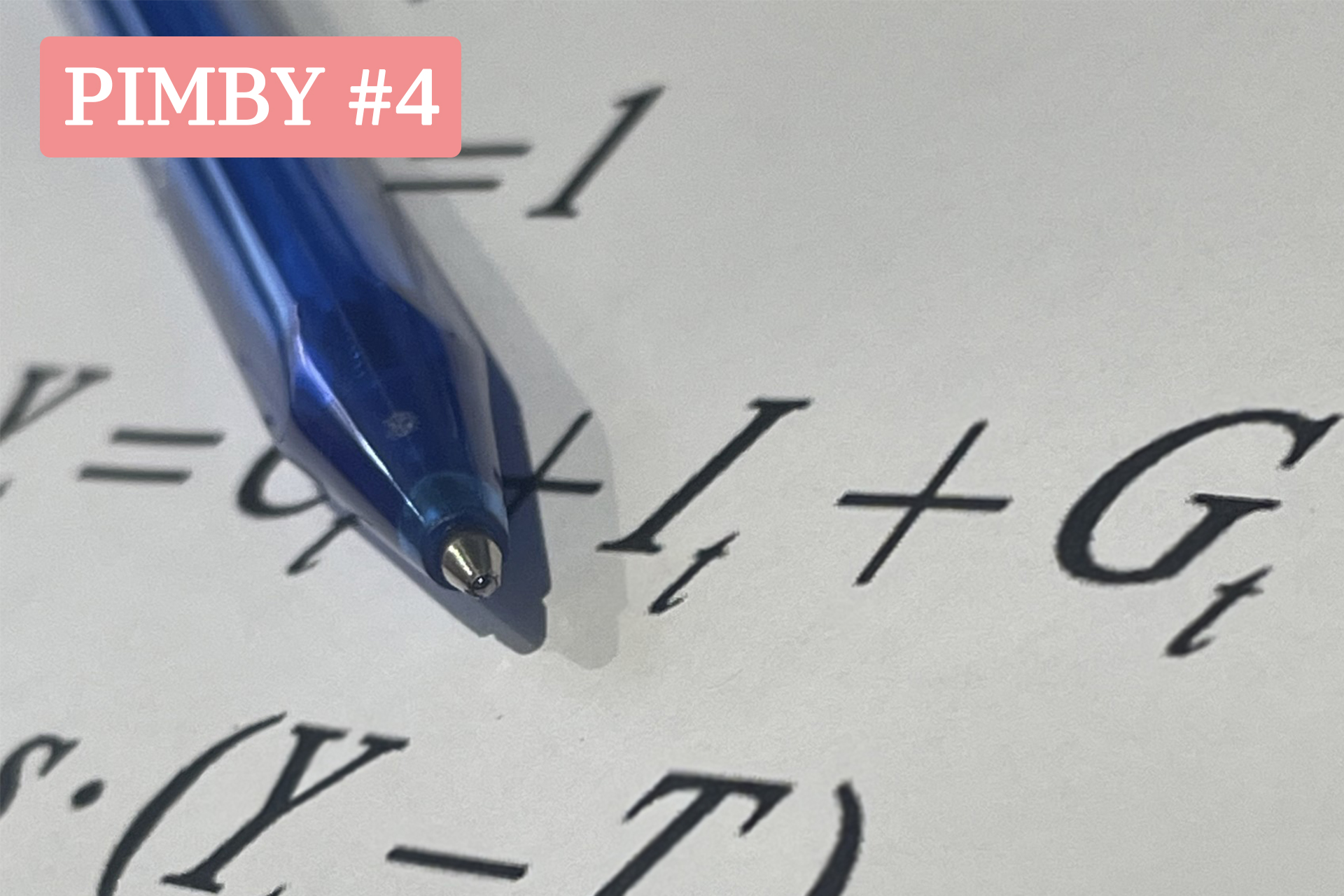Tuesday night’s Federal Budget, including the small surprise tax cut, was all about the looming federal election campaign. Some of the Labor Government’s major election promises have already been announced and baked into the numbers. They’re no doubt saving a
few juicy morsels for the campaign itself – but you’ll still find their
costs tucked away in the fine print. For example, there’s about $15 billion over 2025/26 to 2028/29 in the ‘contingency reserve’, some of which could fund campaign announcements.
In this article, we look beyond the press releases and political spin to examine whether the budget addresses the issues that matter most to Tasmanians – both now and in the years ahead.
Tasmania's top priorities
Right now, Tasmanians are dealing with many of the same pressures as the rest of the country – cost of living, healthcare, and housing. A
recent survey by 3P Advisory found these were the top three concerns for Tasmanians. However, the challenges we’re facing in these areas are often more serious than in mainland Australia.
Tasmania has the third-lowest household disposable income in the country and the cost-of-living outlook is grim. Our health system is under serious strain –
we’re short 150 GPs in the state,
our hospital system is in crisis, and our health outcomes are among the
worst in the country. A decade into the housing crisis, affordability remains at an all-time low,
and we now have the second worst affordability in Australia. Hobart had the
lowest rental vacancy rates of any capital city in early 2025, while
regional Tasmanian rates were below the national average as of October 2024.
So, does this pre-election budget address the issues that matter most to Tasmanian voters?
Cost of living
The main cost of living measure was announced just before the budget: a $150 rebate to every household and business to help them cope with rising energy prices. However, this won’t go far for Tasmanian households. Yes, we have the lowest average residential electricity cost per kilowatt hour in the
National Electricity Market. But our cold winters and poorly insulated homes mean that we
use more power and pay the highest bills.
Nearly 6% of Tasmanian households are in energy debt, and
past TPE research shows that the lowest-income households spend three times more of their income on energy than the wealthiest households. The flat $150 rebate will help, but a means-tested approach would’ve delivered more support where it’s needed most. Looking ahead, the current
Review of the National Energy Market must deliver structural reform that reduces electricity prices for low income households.
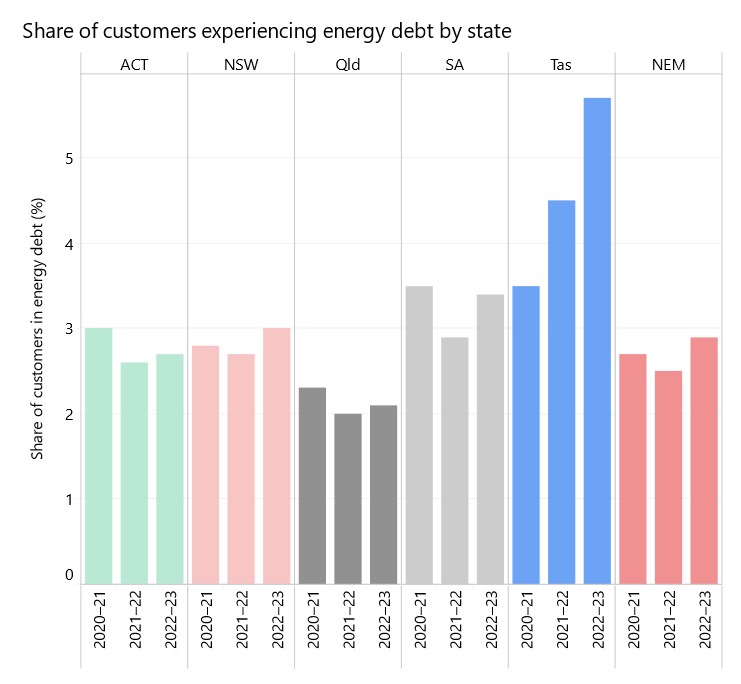
There was also a surprise tax cut. The income tax rate for the lowest bracket will fall from 16% to 15% in 2026/27, and to 14% in 2027/28. That means someone on the median income will be
about $268 better off next year, and $536 the
year after.
However, this change
barely dents bracket creep, and it doesn’t do anything to fix some of the big structural issues in our tax system. Notably, Australia has high and growing dependence on income tax – it makes up 39% of total tax, while the OECD average is 23.7%.
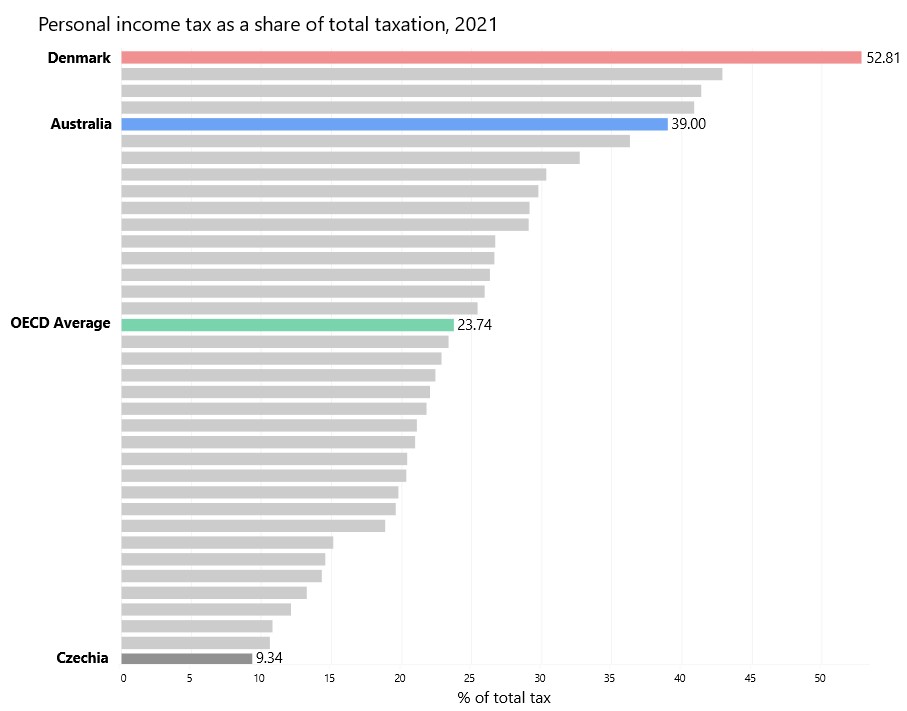
Other structural challenges include our
perverse housing tax regime, the absence of a price on carbon, and the cost to the federal budget of guaranteeing Western Australia’s minimum GST payments will reach $54 billion by 2029/30).
Healthcare
Healthcare has been a big focus for the federal government recently – unsurprising since it’s one of the issues that Labor views as its political ‘home turf’. Several major pre-election initiatives have been announced and are included in the budget:
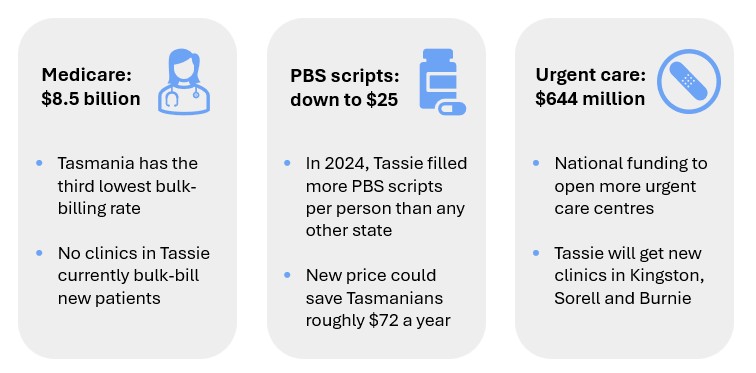
- An extra $8.5 billion in Medicare funding, aiming to expand access to bulk billed appointments. Tasmania has the third lowest bulk billing rate (in front of the ACT and Western Australia) and according to a recent report, there are no GP clinics in Tasmania that will bulk bill new patients. The new funding should help, especially in regional areas, but some Tassie clinics have already said it won't be enough to enable them to bulk bill.
- The maximum cost of a prescription under the Pharmaceutical Benefits Scheme (PBEs) will fall from $31.60 to $25. This is good news for Tasmania, which had the highest number of PBS scripts per person (10.9) of any state/territory in 2024. So, this change could save the average Tasmanian around $72 per year.
- A promise to spend $644 million on 50 new urgent care centres across the country. Tassie will get three of these, in Kingston, Sorell, and Burnie. It is hoped that these centres can take pressure off hospital emergency departments – but staffing will be an ongoing challenge in our state.
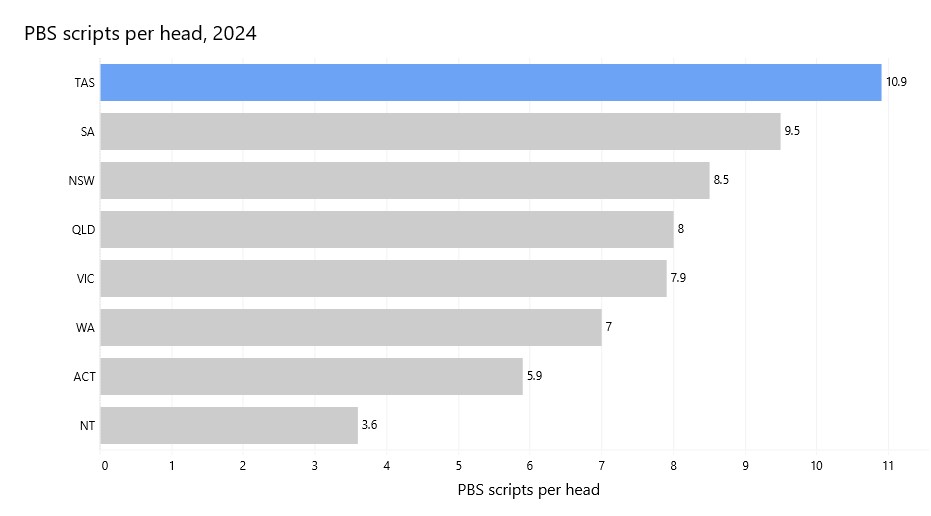
The Coalition has pledged to match the Medicare and PBS commitments, so we can consider them locked in no matter who wins the election. That’s good news, because these two announcements are vital for helping people get the care they need early.
There’s also funding to improve access to cervical cancer screening in Tasmania – a smart
investment in preventive health. Preventative care saves money in the long term because it helps people stay healthy and improves productivity and wellbeing.
Housing
Frustratingly, the budget didn’t contain the ambitious reforms we need to address Australia’s ongoing housing crisis.
There are modest changes to the ‘Help to Buy’ scheme. That’s something, and may benefit up to 10,000 first home buyers per year, but
research suggests that first home buyers programs like this don’t do much to improve housing affordability. Another low-risk (and probably low-impact) measure is the new two-year ban on foreign citizens buying established homes.
Disappointingly, there was nothing new for the 29% of Tasmanian households who rent.
What else is in it for us?
There were a couple of other notable infrastructure announcements in the budget for Tasmania, including:
This infrastructure spending should support longer-term productivity. But to get the most out of it, we need Tasmanians with the skills and training to deliver the projects – instead of
relying on FIFO workers.
Surprisingly, there was no new funding for the Tasmanian Freight Equalisation Scheme. The Liberal Opposition made an election pledge late last week to spend an additional $75 million on the scheme to support Tasmanian producers, and it seemed likely that the government would match this given the
conclusions of a cross-party Senate committee late last year.
Tough choices
Long story short, there is some immediate help for Tasmanians in this budget – cheaper medications, an increase in bulk billing (hopefully), energy bill support, and a small tax cut next year. And some of the health measures may lead to long-term gains in wellbeing and productivity.
Unfortunately, this budget fails to address the big, structural changes that Australia and Tasmania need to become more prosperous, sustainable, and equitable. The minor tax change does nothing to fix structural issues with our tax system, there’s no ambitious housing reform, no innovative new revenue raising measures (like a
major bank levy or
sorting out the way we tax natural gas exports). That’s not surprising so close to an election. But with this budget marking the start of what’s expected to be a decade of deficits, and an
increasingly unstable global political environment, we desperately need more than short-term fixes.
We need bold political leadership and a long-term reform agenda to ready us for the tough times ahead... But that was never likely in a ‘play it safe’, pre-election budget.
